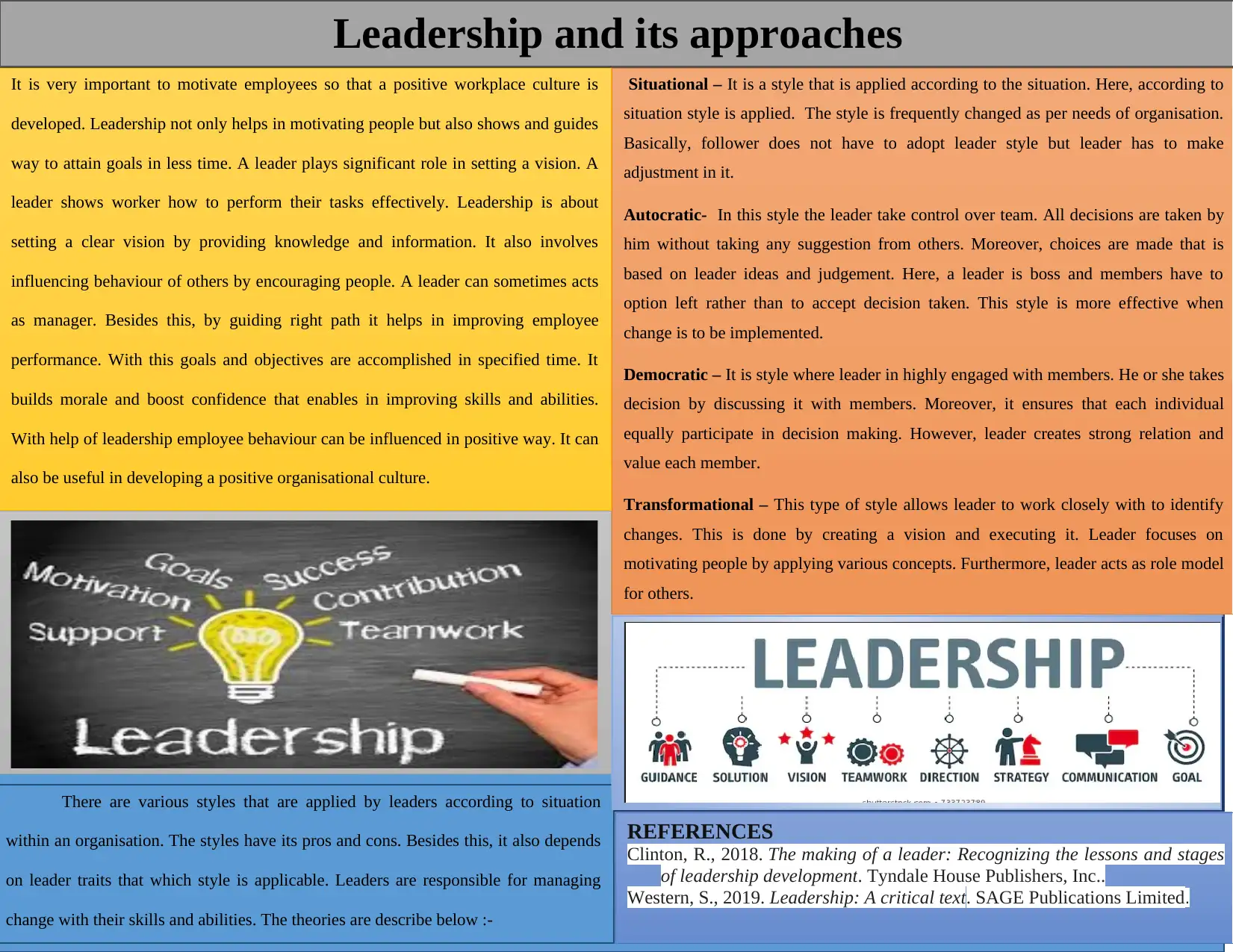Leadership Styles and Their Applications in Organizations
VerifiedAdded on 2020/12/23
|1
|475
|209
Report
AI Summary
This report provides an in-depth analysis of various leadership styles, including autocratic, democratic, transformational, and situational leadership. It examines the characteristics of each style and their applications within organizations. The report discusses how leaders can adapt their approach based on the situation and highlights the importance of leader traits and their impact on organizational outcomes. It also explores the significance of employee motivation and the role of leadership in fostering a positive workplace culture and achieving organizational goals. The report emphasizes how leaders can influence employee behavior and guide them to perform tasks effectively, contributing to overall organizational success. This report is contributed by a student to be published on the website Desklib, a platform which provides all the necessary AI based study tools for students.







![[object Object]](/_next/static/media/star-bottom.7253800d.svg)